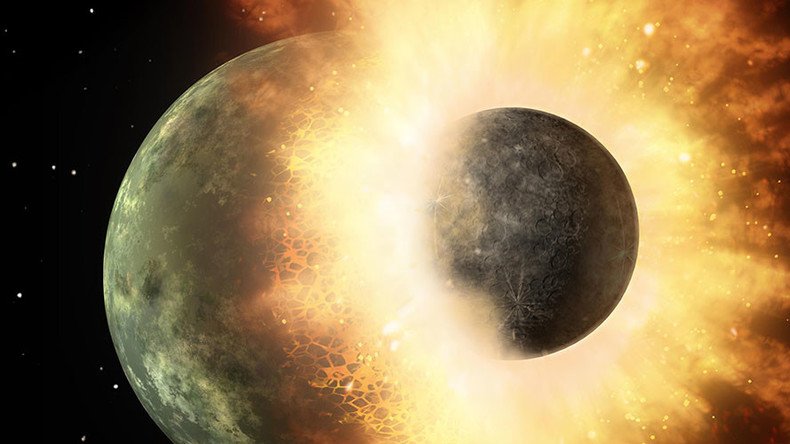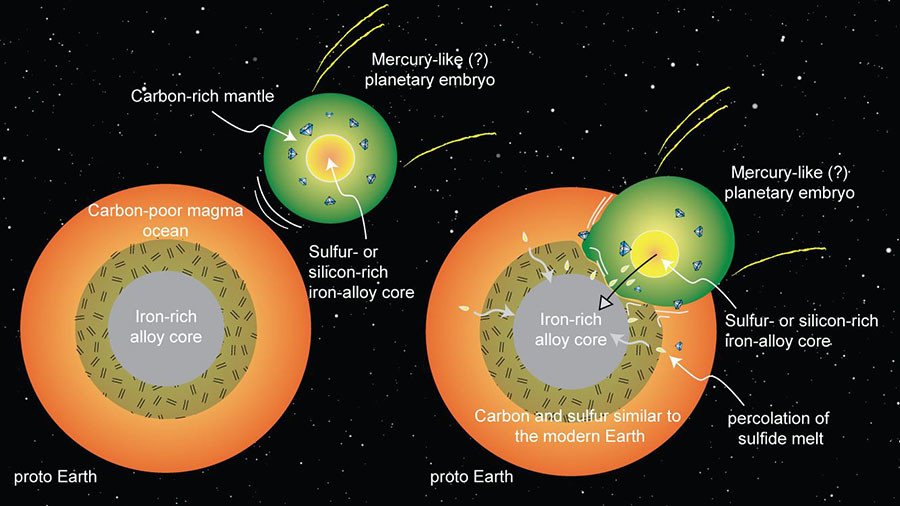Carbon brought to Earth 4.4bn years ago in planetary smash - study

Mankind may owe its existence to an intrusive neighbor - another planet that scientists believe could have smashed into Earth around 4.4 billion years ago, providing life-giving carbon.
One of the most abundant elements on our planet, carbon is an essential ingredient for all life forms.
The finite resource is found in all living things, making up organic compounds such a carbohydrates, proteins, nucleic acids and other building blocks that sustain life.
Given Earth’s high-temperature molten beginnings 4.5 billion years ago, it’s thought that whatever carbon resources were present should have either “boiled away” or become “locked” into the planet’s core, according to Rice University earth scientists.
Researchers at the Texas institution have released a new study suggesting that at one point a neighboring carbon-rich planet transported the element to Earth, depositing it here in a massive self-annihilating collision.

The geoscience study was launched in 2013 by petrologist Rajdeep Dasgupta, lead author Yuan Li, and 3 colleagues.
“One popular idea has been that volatile elements like carbon, sulfur, nitrogen and hydrogen were added after Earth’s core finished forming,” explains Li.
“Any of those elements that fell to Earth in meteorites and comets more than about 100 million years after the solar system formed could have avoided the intense heat of the magma ocean that covered Earth up to that point.
“The problem with that idea is that while it can account for the abundance of many of these elements, there are no known meteorites that would produce the ratio of volatile elements in the silicate portion of our planet.”
By carrying out lab experiments analyzing reactions under the earth’s crust, the group found that carbon was more likely to have come from a secondary “planetary embryo”.
“One scenario that explains the carbon-to-sulfur ratio and carbon abundance is that an embryonic planet like Mercury, which had already formed a silicon-rich core, collided with and was absorbed by Earth,” said Dasgupta.
“Because it’s a massive body, the dynamics could work in a way that the core of that planet would go directly to the core of our planet, and the carbon-rich mantle would mix with the earth’s mantle.”
The collision remains only a theory, but the group say they plan to conduct more research to “reconcile” the conditions.
The full study, supported by NASA and the National Science Foundation, can be found in the Nature science journal.













